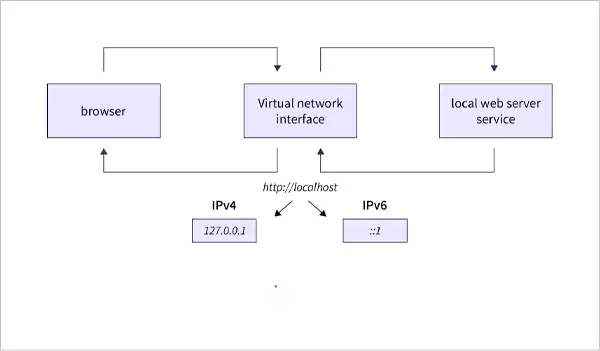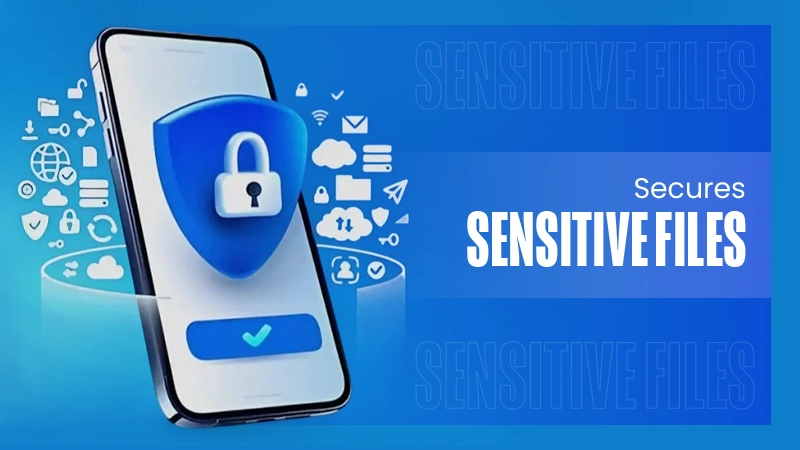
Are you ready to dive into the mysterious world of Localhost? Get ready as we will uncover secrets behind 127.0.0.1:62893, the gateway to endless possibilities.
It’s time to enter the virtual realm and discover how this seemingly simple combination of numbers can hold the key to unleashing your coding potential. With its unique IP address, 127.0.0.1:62893 is your playground where you can test, experiment, and create without any limitations.
From web development to network testing, this code is your one-stop destination for all things tech-related. But that’s not all – 127.0.0.1:62893 also serves as a portal for collaboration and learning within the local community of coders and developers.
So don’t wait any longer, join us on this exciting adventure through the wonders of 127.0.0.1:62893 and unlock its full potential.
What Is 127.0.0.1:62893 Code and How is it Processed?
Concerning networking and software development this address is more than just a sequence of numbers, it is something that simplifies local network communication.
Look below to understand it to the core:
- 127.0.0.1: This is a unique IP address that acts as a loopback path. Hence, it keeps the computer from pointing to itself. This is often known as the computer’s localhost.
- 62893: It is a port number used for sending and receiving data from different applications. The fact that this port is not standard and is rarely used by caching systems like Memcached.
The address paired with ports like 62893 plays a vital role in testing, debugging, and ensuring smooth operations.
Process Of 127.0.0.1:62893
Here is the working of 127.0.0.1:62893:
- Suppose an application is trying to communicate with another process of the same machine. In that case, it sends a notification to 127.0.0.1 (localhost) notifying that an application is attempting to interact with other processes.
- Now, what happens is the localhost sends a message to port number (62893), and it commands the computer to direct communication to a specific service.
Is Code 127.0.0.1:62893 Good?
Many of you must be wondering is it good. Well, like many things in the coding world, the answer isn’t black and white. This specific code serves a purpose in network communication, acting as a loopback address to connect back to your own device.
But, to answer is it good? Yes, this code is not harmful to the computer and can be used in aspects like:
- Security: It can identify harmful activities of computers like suspicious acts to access information without consent.
- Development and Testing: Helpful in both the development and testing of applications. Many developers use it for a secure and internet-free testing environment.
- Debugging and Networking: Using it, users can understand the problems occurring quite often because of network disasters and can easily detect them for early troubleshooting.
Brief Description of Localhost and Its Role in Network Communication

Before getting into the specifics of 127.0.0.1:62893, it is equally important to understand what ‘localhost’ means. In simple terms, localhost is a hostname that refers to the current device used to access it.
In other words, it is like a loopback interface that routes the data back to the same device.
Its Role in Networking
Here are the reasons why a localhost is vital in network communication:
- Testing and Development: It is mostly used by developers to test web applications on their local machines prior to deploying them to a live server.
- Security: Since the data doesn’t travel over the internet, it ensures security for sensitive tasks.
- Performance: The communication is incredibly faster via localhost since it bypasses external networks.
How the Error Occurs
Imagine a scenario, where you are immersed in coding and focus on a project. Then, suddenly the dreaded error message pops up i.e. “Disconnected from the target VM, Address: 127.0.0.1:62893”. It is frustrating and might interrupt the flow.
The occurrence of it can be traced back to factors within the development environment. The one common reason is a missing configuration in the network settings or an issue with the communication between different components of the system.
Software, conflicts, or outdated drivers lead to this error, cropping up unexpectedly.
Another reason could be firewall settings or antivirus programs. They might interfere with the connection process, causing disruptions in the communication channel.
What is The “Disconnected from the Target VM, Address: 127.0.0.1:62893” Error?
Mostly, this error is faced by developers when using development tools like VS Code. And, it might occur during remote bugging sessions, especially when the ID fails to connect to the Java Virtual Machine running locally
This pop-up message indicates the debugger’s inefficiency in connecting to the target machine at the specified port. Additionally, users may encounter a Netflix error code if similar connectivity issues arise while attempting to stream content due to network misconfigurations.
How To Resolve “Disconnected From The Target VM, Address: 127.0.0.1:62893” Error?
Concerning diagnosing the error, it involves a systematic approach. Here is what to look for and how to fix it:
- Check the Service: Go through the application settings and make sure that everything is fine from your side. Meaning, the service to connect to on port 62893 is running.
- Verify Port Availability: Match the port number and it should be 62893. In case it is not connected to the same port, then different configurations and methods will apply.
To see if the port 62893 is in use by another application, use terminal commands like ‘Netstat’.
- Inspect configuration files to ensure the service is all set to use the correct port.
- Firewall Settings: Check if the firewall isn’t blocking your access to the port 62893 for local connections.
Fixing The Error:
Follow these steps to get rid of this error:
- Start Service: In case of stopped service, start back using appropriate commands or scripts.
- Change Port Numbers: If you found there is a port conflict, then configure the application to use a different port in its settings.
- Configure Firewall: Add exception rule in firewall to allow traffic on the same port for localhost. It can be done on Windows as well as Mac. Here is how:
- On Windows: Go to Control Panel, then click on System and Security, next to Windows Defender Firewall, then click on Advanced Settings, Inbound Rules, and finally create a new rule for port 62893.
- On Mac/Linux: Simply use terminal commands like iptables to configure the firewall.
- Application-Specific Configuration: Sometimes the problem is not with the system, but within the application itself. To sort it out, refer to the application’s documentation for specific configuration requirements and check if the things are right or not.
- Network Diagnostic Tools: Make the most of like Netstat available on Windows or Isof available on Unix/Linux to see if the application is already using port 62893.
Tools and Methods for Diagnosing
Effective troubleshooting of connectivity issues requires the use of specialized tools and methods, such as Netstat, Telnet, and log files. These tools provide valuable insights into network connections and can help identify the root cause of connection problems.
Let’s know them one by one:
Netstat (Network Statistics):
It is a command-line tool which displays a list of all current network connections, routing tables, and interface statistics including open ports, listening ports, and TCP/IP statistics.
To use Netstat, you need to open the Command Prompt or Terminal and type in “netstat” followed by these options:
- “-a”: Displays active TCP connections and the TCP/UDP ports.
- “-n”: Shows IP addresses instead of hostnames.
- “-p”: Displays the PID (Process ID) and name of the program.
- “-r”: Routing table for both IPv4 and IPv6 protocols.
- “-s”: Statistics for each protocol (TCP, UDP, ICMP).
In this content, use`netstat -an | grep 62893` to check if port 62893 is active.
Telnet:
A network protocol used for establishing remote terminal sessions with other computers over a TCP/IP network and for testing port connectivity. You have to run `telnet 127.0.0.1 62893`and see if the port is reachable or not.
Log Files:
Log files are records of events that occur on a computer system or network. These are necessary tools for diagnosing connectivity issues as they provide a detailed history of network activity and errors.
They usually have clear messages about mistakes that can help you find the solution.
Preventive Measures to Avoid Future Disruptions
To prevent future occurrences of the 127.0.0.1:62893 error, there are several proactive steps you can take to ensure a smoother experience with your network connectivity. Here are of them:
- Monitor Regularly: Occasionally monitor the status of services running on localhost. Doing this, you can find the issues early.
- Use Automated Scripts: Utilize automated scripts to check port availability and service status on a regular basis.
- Comprehensive Documentation: Maintain a documentation of port assignments and configurations. This is suggested to avoid conflicts and streamline troubleshooting.
Final Thoughts
It is essential to understand the 127.0.0.1:62893 code and how to address it effectively for smooth network communication in 2024. By being aware of common causes, diagnosing tools, prevention tips, and alternative solutions discussed in this article, you can troubleshoot and resolve connectivity issues related to this code efficiently.
Remember that staying informed about network errors like “Disconnected From The Target VM, Address: 127.0.0.1:62893” empowers you to tackle them proactively when they arise.
So, stay curious, stay informed, and stay ahead of network challenges as you navigate through the intricate web of technology and connectivity!
Also Read: https://techybrain.net/127-0-0-1-49342/










